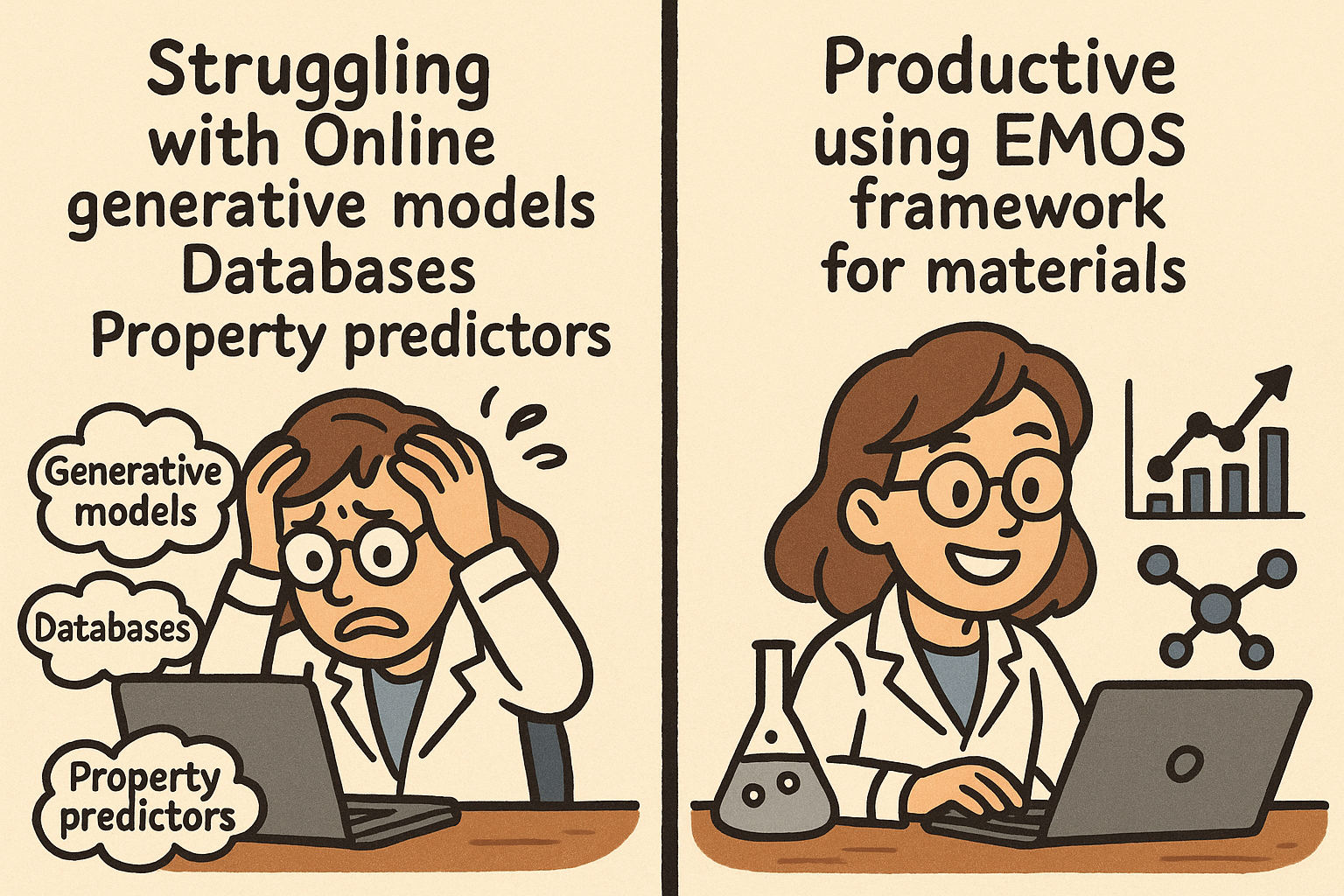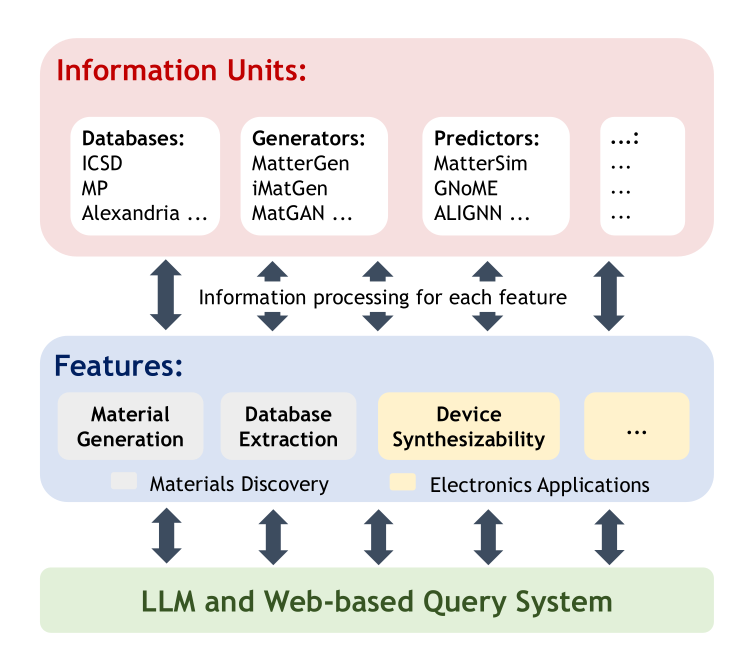What is EMOS?
The Electronics Materials Operating System (EMOS) is an open, web-based platform that unifies fragmented resources in electronic materials research. It brings together diverse databases, interoperable computational tools, and benchmarkable AI models within a single, extensible ecosystem. By addressing duplication of effort and enabling reproducibility, EMOS empowers the community to collaboratively accelerate the discovery and development of next-generation electronic materials.

Key Features
Materials Exploration
- Material Search & Discovery
- AI-Powered Material Generation
- Database Integration & Extraction
- Advanced Material Characterization
Electronics Applications
- Device Synthesizability Analysis
- Electronic Property Prediction
- Band Structure Calculations
- Thermal Management Solutions
Information Units
- Multi-Database Access (ICSD, COD, MP, etc.)
- AI Material Generators (MatterGen, GNoME)
- ML Property Predictors (M3GNet, DeepMD)
- Seamless Integration Workflow
System Architecture
EMOS employs a modular, object-oriented architecture with clear separation between frontend interface, backend processing, and information units. This design ensures scalability, maintainability, and easy integration of new computational tools and databases.
Frontend Layer
Interactive web interface for feature selection and result visualization
Backend Processing
Flask-based API for python based scripts
Information Units and Features
Modular components for databases, generators, predictors and features
The EMOS framework integrates diverse information sources into a unified, intelligent workflow for electronic materials research. At the top level, Information Units—including databases (like ICSD, MP), material generators (e.g., MatterGen, MatGAN), and predictors (e.g., GNoME, ALIGNN)—serve as the core data and model resources. These feed into feature modules such as material generation, database extraction, and device synthesizability, enabling both materials discovery and electronics applications. The entire system is powered by an LLM and web-based query interface, which connects users to the framework through natural language interaction and streamlined information processing. Together, this architecture ensures interoperability, efficiency, and accessibility across the electronic materials ecosystem.

Impact & Applications
EMOS aims to accelerate materials discovery for next-generation electronics, from quantum devices to energy storage solutions. By providing researchers with powerful computational tools in an accessible web interface, we're democratizing advanced materials research and fostering innovation in the electronics industry.